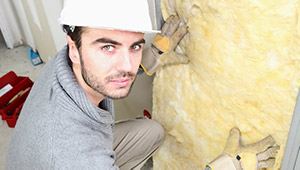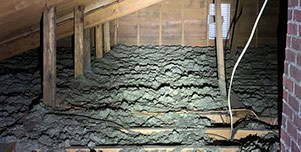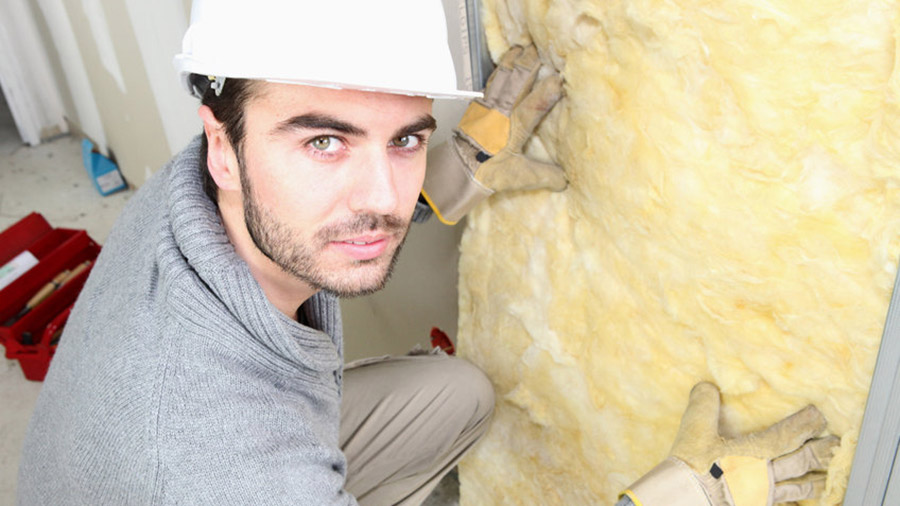
Insulation is a critical component of every home. It helps our homes stay cool in the Summer and warm in the Winter. When it comes to improving your home’s insulation, whether you need faced or unfaced insulation can be confusing. Both faced insulation and unfaced insulation have a purpose, and knowing where to use each is important.
Faced Insulation is fiberglass insulation with a kraft paper vapor barrier on one side. It’s stapled into place with the paper side facing the interior of the home. Unfaced insulation has no kraft paper vapor barrier attached to it and is held into place by pressure or friction.
To better understand the difference between the faced and unfaced insulations, it is best to understand what is being insulated and its importance.
What’s The Difference Between Faced And Unfaced Insulation
How did they come up with the terms “faced” and “unfaced”?
Well, “faced” literally means to face-off, push it back, or act as a barrier from accessing the other side. A facing insulator comes in various paper or plastic materials, e.g., Kraft paper, foil kraft paper, aluminum foil, and vinyl.
A facing, therefore, is a material that is attached to the fiberglass insulator/insulation meant to help control the effects of vapor or moisture on the fabric of the building.
Facings help:
- Protect the surface.
- Hold the insulation together.
- Fasten material to building components.
Insulating material comes in rolls that are commonly referred to as batts. There are two varieties of batt insulations:
- Faced insulations
- Unfaced insulations

What is Faced Insulation
Faced Insulation is a type of roll or batt insulation with a kraft paper attached to one side which acts as a vapor barrier. In addition, insulation comes complete with a vapor barrier/retarder.
A Faced Insulation is stapled onto the framing with the paper side facing the home’s interior to install it. The faced should always be against the drywall as the drywall will be the interior side. They are ideal for spaces that have never been insulated before, such as in vaulted ceilings, exterior walls, and exterior basement walls.
For example, when insulating a ceiling, the paper side should face down and not up. When insulating an exterior wall, the paper side will be to the interior with the drywall installed against the paper.
When to Use Faced Insulation
Faced insulation should be used in areas where no insulation is present. Do not install faced insulation over existing insulation. When installing faced insulation, the paper side is always installed against the living space.
- In attics, kraft paper is installed down.
- In crawl spaces and basements, the kraft paper is installed up.
- In exterior walls, the kraft paper is installed on the interior side.
What is Unfaced Insulation
Unfaced Insulations are made from fiberglass roll or batt insulation products and have no kraft paper attached to them. Unfaced Insulations, therefore, lack vapor barrier/retarder.
Unfaced insulation is held into place by the pressure or friction fit in joints and rafters when installing it.
Unfaced insulations are also ideal for backing up areas that have been insulated before and probably need reinforcement. They are also the best soundproof insulation around for indoor walls such as the nursery.
When to Use Unfaced Insulation
Unfaced insulation is not suitable for all applications. Unfaced insulation is primarily used:
- In areas where no vapor barrier is needed.
- Can be used in attics over existing insulation to add more R-value.
- Can be installed in interior walls for insulating and soundproofing.
- Can be used in floors between floor levels for insulating and soundproofing.
What R-Value Faced or Unfaced Insulation Do You Need?
R-value is used to determine the air resistance offered by an insulation product. R-value is often a correlation to the thickness of the insulation. As insulation compresses (either by age or contact), it loses R-Value.
The following R-value table shows what insulation thickness you’ll need by zone.
| Zone | Attic | Walls – 2×4 | Walls – 2×6 | Floor | Crawl Space |
|---|---|---|---|---|---|
| 1 | R30-R49 | R13-R15 | R19-R21 | R13 | R13 |
| 2 | R30-R60 | R13-R15 | R19-R21 | R13 | R13-R19 |
| 3 | R30-R60 | R13-R15 | R19-R21 | R25 | R13-R25 |
| 4 | R38-R60 | R13-R15 | R19-R21 | R25-R30 | R25-R30 |
| 5 | R38-R60 | R13-R15 | R19-R21 | R25-R30 | R25-R30 |
| 6 | R49-R60 | R13-R15 | R19-R21 | R25-R30 | R25-R30 |
| 7 | R49-R60 | R13-R15 | R19-R21 | R25-R30 | R25-R30 |
| 8 | R49-R60 | R13-R15 | R19-R21 | R25-R30 | R25-R30 |
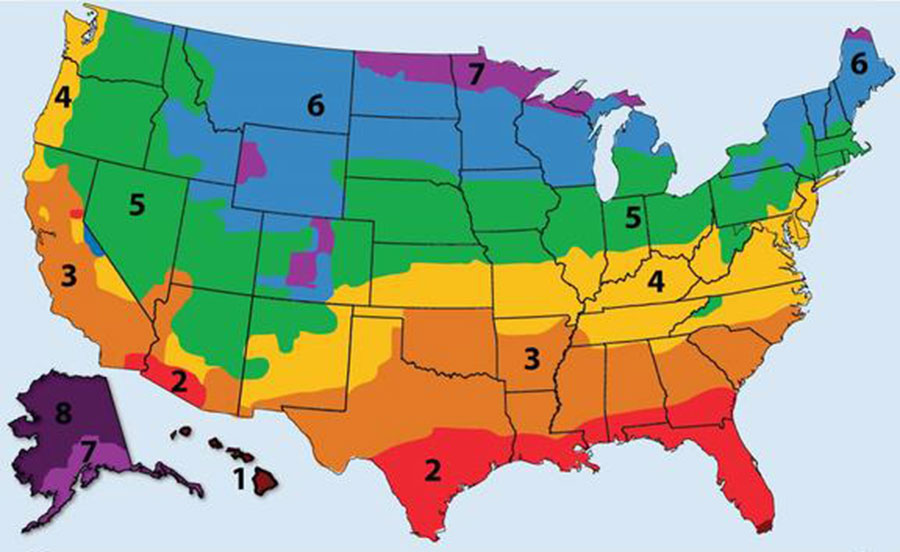
Vapor Retarders Vs. Vapor Barriers: What’s the Difference
There is a slight difference between a vapor retarder and a vapor barrier. Most of the time, though, the two are interchangeably used when referring to vapor barriers.
In explaining their difference, it is crucial to note that no matter how solid or thick a building material could be, water vapor, as minimal as is, could happen quickly or slowly but will eventually penetrate through the material.
The situation where water vapor penetrates through the building material is referred to as permeability. Both vapor barriers and vapor retarders are rated through a system called a perm, which is the term related to “permeance” and” permeability.”
So permeance is the water/vapor transmission rating.
Materials that score a low perm rating mean better vapor barriers, and higher perm ratings mean they are more porous to vapor and moisture.
The Building Science Corporation defines Vapor Barriers as a layer with a perm score rating of 0.1perm and below. A vapor barrier is laid out during the construction of a building, and its primary function is to minimize the chances of moisture from damaging the building’s fabric.
On the other hand, Vapor Retarders are vapor-resistant materials. Their primary function is to barring moisture from transmitting from one side of the wall to the other side by covering one face of the wall. Vapor retarders include polythene films, non-perforated aluminum foil, glass, sheet metal, and foil-faced sheathing.
Both Vapor Retarders and Vapor Barrier materials function by diffusing vapor and moisture on the fabric of a building. They both can effectively protect you from too much cold and also protect your building from wearing out.
What You Need to Know When Installing Insulation
Installing home insulation solutions is pretty much an easy job and a do-it-yourself kind of project. Still, you can always call a professional for structural and vapor/moisture-related problems.
The climatic condition of the region a person resides in has a significant impact on the choice of Vapor Fabric to use and where to install the Vapor material, e.g., whether to install it on the outer or the inner walls.
In cold climates, for example, Vapor Retarder fabrics should be installed on the inner wall of the building.
So before making a choice and picking a material of your liking and one that meets your needs, first determine whether your climate is dominated by hot weather patterns or cold weather patterns.
Mixed humid climates would disagree with low perm polythene films and aluminum foils.
Soft perm materials, as earlier stated, have lower chances of vapor/moisture penetration. They, therefore, should not be used in mixed humid regions as you would trap too much heat inside your home.
Aside from climate, different rooms within your home have different condensation rates. So a home will function well when different rooms are insulated with various vapor fabrics bearing different perm ratings.
- Before installing anything, you must first mind your safety by making sure to put on glasses, dust masks over your mouth and nose, gloves on your hands, and wear long sleeves and long pants as well. It protects your skin from the itchy effects some insulating materials contain, among others.
- A product needs to be installed correctly, just as instructed by the manufacturer through the product manual. Be sure to follow them correctly and work one step at a time.
- When installing, be aware of any potential safety hazard regarding where not to install insulation. For example, places close to chimneys, Attic Vents, and Gas Pipes should not be covered as they need sufficient airflow.
It is important to note that since a home or building needs insulation, a good house cannot be accommodating or comfortable if it lacks air ventilations.
Vapor Retarder Requirements
When faced with an insulation instigation job, it is always best to first check with the local building codes to find out their recommended requirements suitable for the state you reside in.
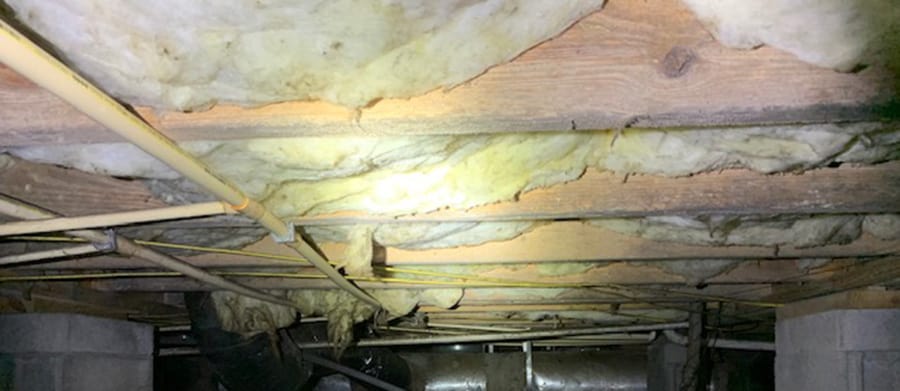
Understanding the Term “Insulation”
Physics describes insulation as the process or action of protecting something that possesses heat or electricity from potentially losing it. It is also sealing off a room to make it soundproof.
The keywords here are heat and electricity.
But heat also could be in the forms of vapor and moisture.
Insulation also involves sound. The interior of a room is installed with a soundproof material to minimize sound from coming in and getting out.
To insulate something needs the use of a material that does not allow or permit sound, heat, or electricity to move out or come in. Good insulating materials come in rubber, glass, Styrofoam, paper, plastic, wood products, and ceramics materials.
Conclusion
Faced Insulation and Unfaced Insulation are very interesting topics to engage in. They say East West Home is the best. So no matter where we go, and no matter how long we are away, we finally return home. A home is a place of peace and comfort.
Home Insulation promotes comfort. Whether you need it or not is an important question, but insulating your home is one of the most important investments in home construction.
Home insulation has a significant effect on energy consumption. When you install insulators, the heat within your home is conserved, saving you the extra utility bills incurred through an air conditioning machine.
If you choose to install an insulator in your home, be sure to choose the right material that suits the project and install it correctly. As such, it is the only way of converting your home into an energy-efficient environment as thermal performance depends on proper installation.



